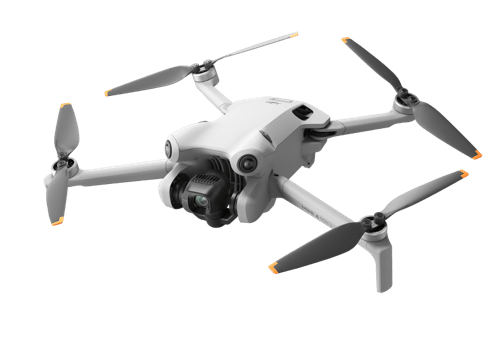
Introduction
High density altitude reduces drone performance and requires more power for takeoff, while low density altitude enhances performance by providing more air molecules for lift. In this lesson we’ll look at how density altitude is measured and how to know it can impact your sUAS flight mission.
Exam Prep
On the Part 107 exam, you’ll encounter images of sectional charts and be asked to identify all kinds of information
What is Density Altitude?
Overview
Density altitude is like figuring out how “thick” or “thin” the air is where you’re flying. When the air is thinner—because it’s hot, high up, or both—your drone has to work harder. This can make its propellers less efficient, so it won’t fly as well or as long.
Think of it this way: flying in thick air (low density altitude) is like running downhill—it’s easier! Flying in thin air (high density altitude) is like running uphill—it’s harder, and your drone gets “tired” faster. So, knowing the density altitude helps you plan how your drone will handle the flight.
Temperature, Pressure, and Altitude
Density altitude is a calculated value that reflects the actual density of the air based on temperature, pressure, and altitude.
As temperature increases or pressure decreases, the air becomes less dense, meaning there are fewer air molecules in a given volume. This affects how well a drone’s propellers can generate lift, as the thinner air makes it harder for them to push the same amount of air downward.
A higher density altitude means your drone will experience reduced performance, particularly in terms of lift and battery life, since it has to work harder to maintain the same level of flight. Understanding density altitude helps pilots adjust their flight plans for optimal drone performance under varying environmental conditions.
What Influences Density Altitude?
Air Pressure, Temperature, and Humidity
3 Key Factors of Density Altitude
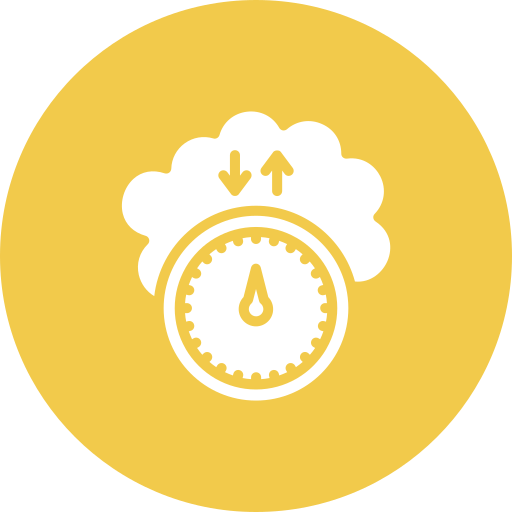
Pressure Altitude
A calculated value based on current air pressure.
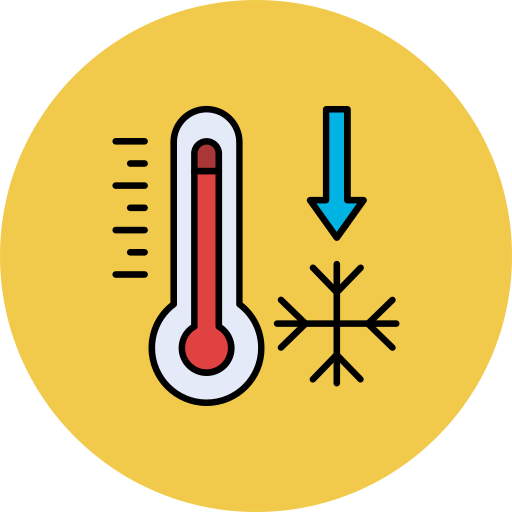
Temperature
How hot or cold the air is, based on how fast the air molecules are moving. Warmer air means faster-moving molecules.
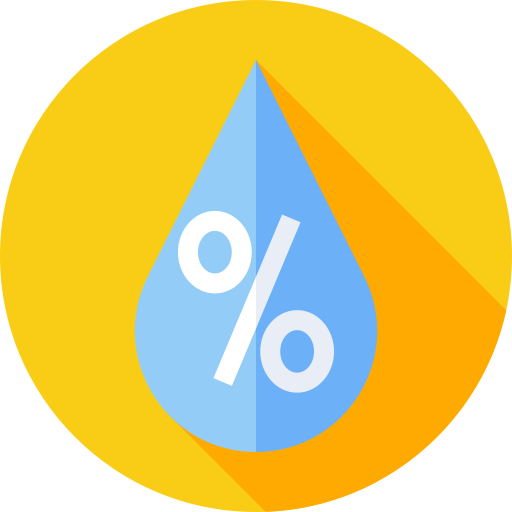
Humidity
The amount of water vapor in the air.
The Standard Day
A standard day is a reference for atmospheric conditions used in aviation. It represents a set of average conditions at sea level under typical weather patterns. The standard day is defined as:
- Pressure Altitude: 29.92 inches of mercury (inHg) (or 101.3 millibars)e
- Temperature: 15°C (59°F)
- Humidity: 0% (dry air)
These conditions provide a baseline for comparing actual weather conditions at different altitudes. When we say “standard day,” we are referring to these specific parameters. If the conditions are different from these values, it affects performance factors like density altitude.
On a standard day, the air density is considered normal at sea level, but as you climb, density altitude increases, leading to reduced lift, reduced propellor efficiency and engine performance.
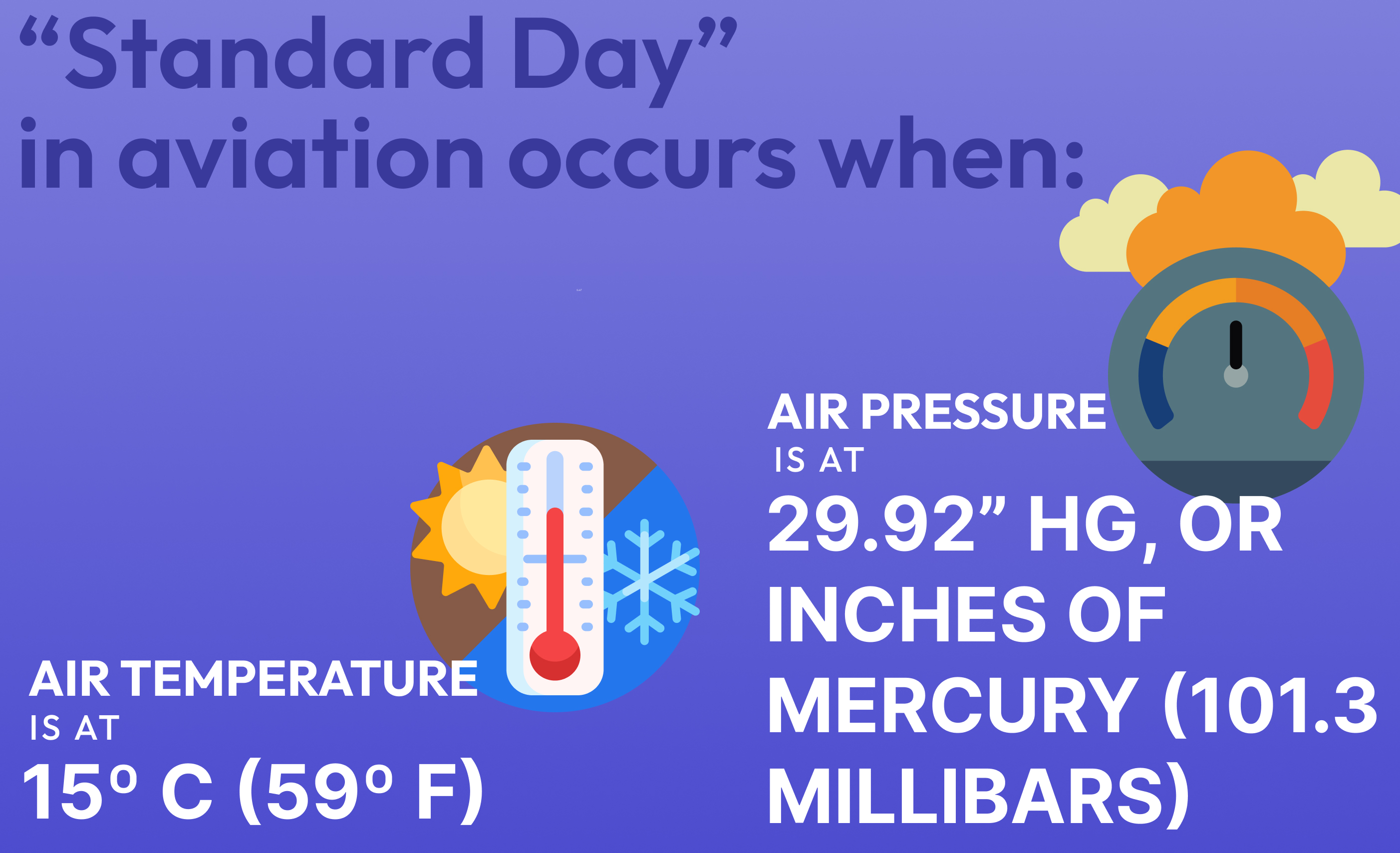
Pressure Altitude, Temperature, and Humidity
Standard Day and Density Altitude

Pressure Altitude
Essentially, pressure altitude helps pilots understand how the atmosphere is behaving at a given location, taking into account current air pressure and comparing it to what it would be under standard conditions.
As you go higher in elevation, air pressure decreases, causing the air to become less dense. This results in higher density altitude, which means the air is “thinner” and has less oxygen.
For example, in high-altitude areas like the Rocky Mountains, the air is much thinner, making it harder to breathe and fly. This is because, as elevation increases, the air becomes less dense, which reduces lift, lowers engine power, and decreases the drone’s propellor efficiency.
On a standard day, at sea level, you’ll have normal air density, but as you go up, the air becomes more difficult to fly in, making it essential for pilots to account for density altitude when operating in higher elevations.
Field Example: Rocky Mountains
Flying at 200 feet above ground level (AGL) in the Colorado mountains is vastly different from flying at the same altitude at sea level. In high-elevation environments, where air pressure is much lower than at sea level, your drone will consume battery power more quickly and perform less efficiently due to the higher density altitude (i.e. thinner air).


Temperature
On a standard day, at sea level, the air temperature is 59°F (15°C), and the air density is considered normal. Temperature affects air density by determining how tightly or loosely the air molecules are packed.
When temperatures rise, the air molecules spread out, reducing the air’s density. This means that warmer air is less dense, which in turn can negatively affect drone performance.
In hot weather, drones experience reduced lift because the air is “thinner,” which makes it harder for the drone to stay in the air. Additionally, warmer air can decrease engine power and reduce propeller efficiency, making it more challenging to fly.
For example, during a hot summer day in a desert or a city, the air density is much lower, leading to reduced drone performance.

Humidity
Humidity refers to the amount of water vapor in the air. On a standard day, the relative humidity is typically around 50%, meaning there is an average amount of water vapor in the air. In these conditions, the air density is “normal” for that temperature and pressure.
As humidity increases, water molecules take up space in the air. Water molecules are lighter than the oxygen and nitrogen molecules that create air. This reduces the number of oxygen and nitrogen molecules in a given volume of air, increasing the density altitude.
High vs Low Density Altitude Drone Flight Impact
Low vs. High Density Altitude
High Density Altitude: Challenging Drone Performance
When the air is less dense—due to factors like warmer temperatures, higher humidity, or lower pressure—the density altitude increases. This makes it harder for drones to perform optimally, reducing their takeoff and climb performance. The drone’s motor has to work harder, using significantly more power to lift off.
Low Density Altitude: Optimized Drone Performance
Low Density Altitude: When the air is denser—due to cooler temperatures, lower humidity, and higher pressure—the density altitude decreases. This improves drone performance, as there are more air molecules for the propellers to generate lift, allowing for better efficiency and performance.
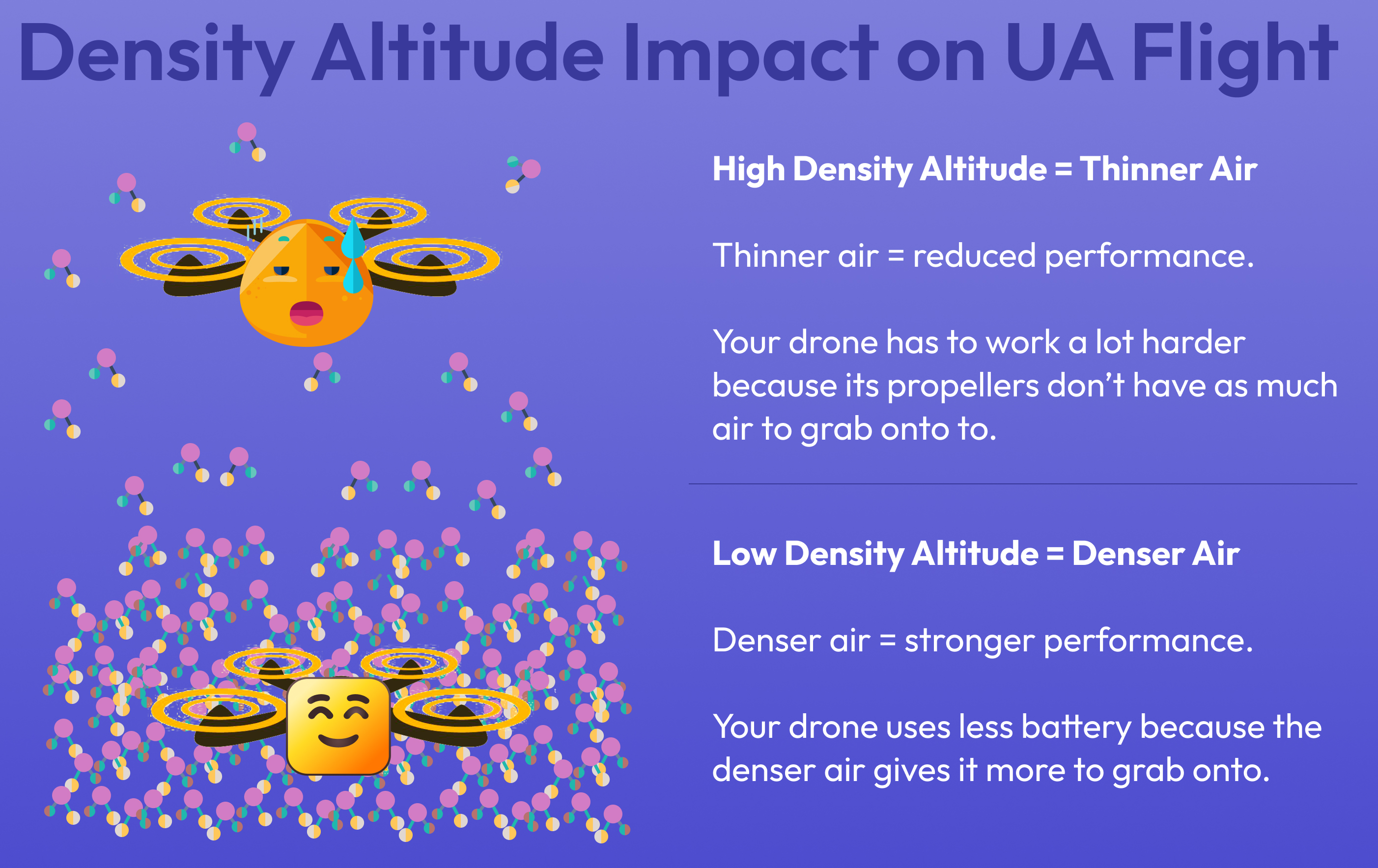
Flash Cards
Density Altitude
is defined by?Pressure Altitude & Ambient Temperature
High density altitude equals thinner air, making your propellers less efficient.High Density Altitude
Impact on propeller efficiency?Decreased Efficiency
High density altitude equals thinner air, making your propellers less efficient.Hot and Humid Weather
Impact on aircraft performance?Decreased Efficiency
Hot and humid conditions further increase density altitude, worsening performance.
Standard Day
Standard air temperature and pressure at sea level?15º C 29.92” Hg
At these standard conditions, density altitude and pressure altitude will be equal to each other.
Pressure Altitude
If the outside air temperature is *warmer* than standard, the density altitude is?Higher than Pressure Altitude
Density altitude is lower than the pressure altitude because colder air is denser.
Pressure Altitude
If the outside air temperature is *colder* than standard, the density altitude is?Lower than Pressure Altitude
Density altitude is higher than the pressure altitude because warmer air is less dense.

